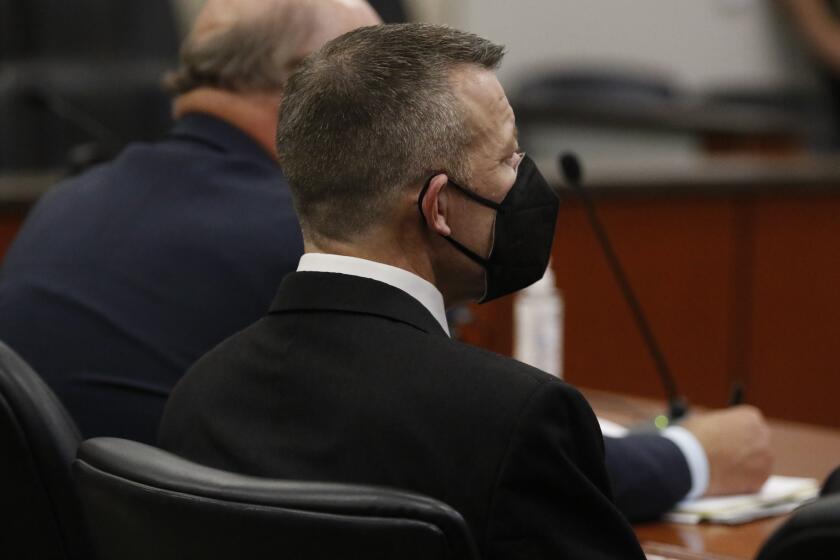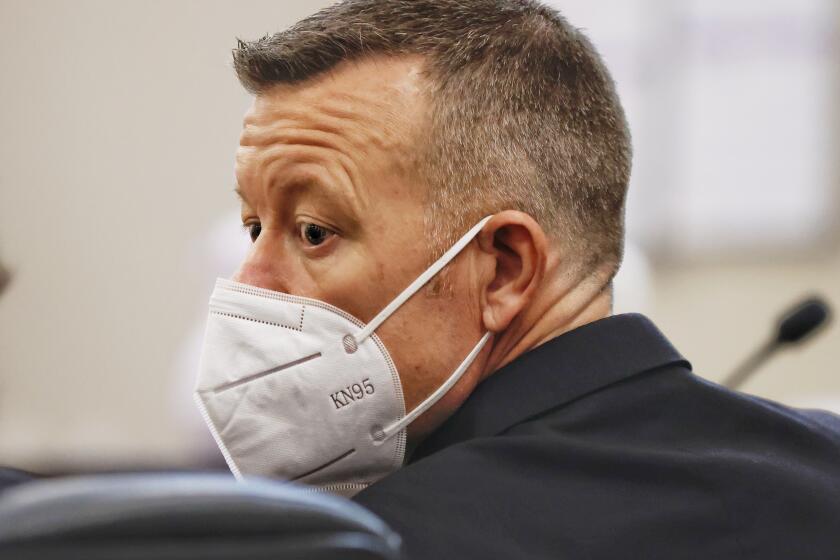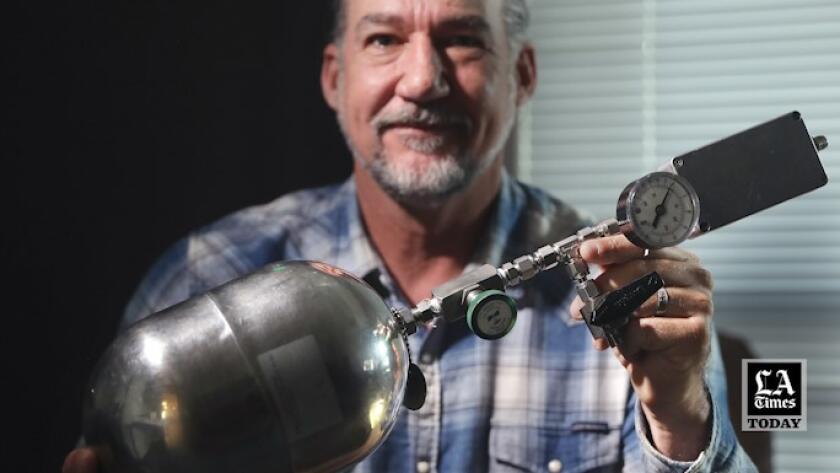The unorthodox quest to find Kristin Smart’s body, the last piece of an enduring mystery
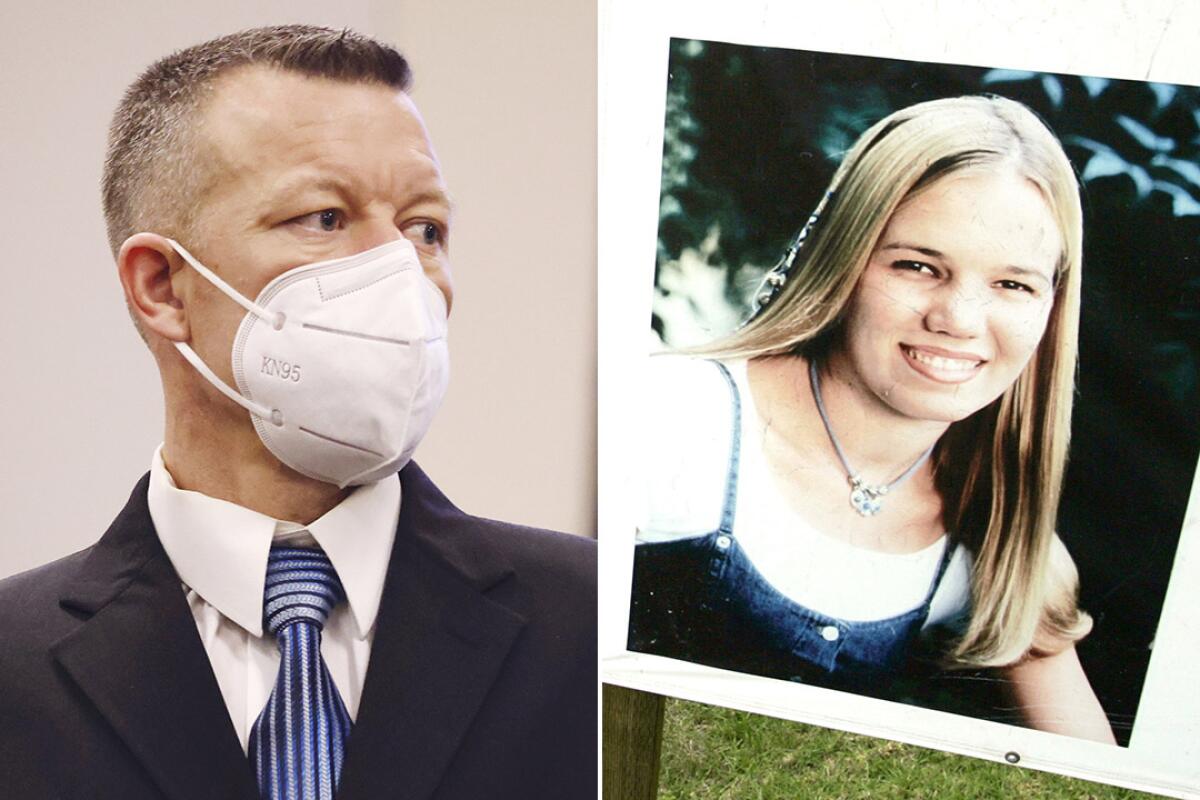
- Share via
ARROYO GRANDE, Calif. — It’s been 27 years since Kristin Smart disappeared following an off-campus party after being “hunted” for months by another Cal Poly San Luis Obispo student.
Paul Flores, who was the last person seen with Smart as the two walked toward her dormitory after a Memorial Day weekend party, was convicted in October of murdering her in 1996. But her body has never been found.
Smart’s parents, Stan and Denise Smart, say the guilty verdict wasn’t enough. They want to be able to lay their daughter’s remains to rest.
Even the San Luis Obispo County’s Sheriff’s Office has refused to close the case.
“We don’t take a breath. We do not put this aside. We continue to pursue this until we bring Kristin home to the family,” Sheriff Ian Parkinson said after Flores’ trial.
Authorities never found Kristin Smart’s body, an issue long considered a stumbling block in the case. She was declared legally dead in 2002.
Now three men — an engineer, a scientist and an FBI research-chemist-turned-professor — are on a quest to find where the 19-year-old’s body is buried.
They are using technology known as soil vapor sampling, which they say could detect the presence of volatile organic compounds that may be associated with decomposing human remains. Although the practice is still in the theoretical research stage, scientists have spent two decades studying the chemical compounds associated with the breakdown of human bodies.
Sheriff’s Det. Greg Smith said the department is investigating the trio’s work to determine whether it might be useful in the Smart case. Chief Deputy Nathan Paul, who is supervising the investigation, said sheriff’s officials have also been in touch with the FBI about the research done by the men.
The science is unproven and has never been used in any criminal proceedings, but the group is confident in its findings.
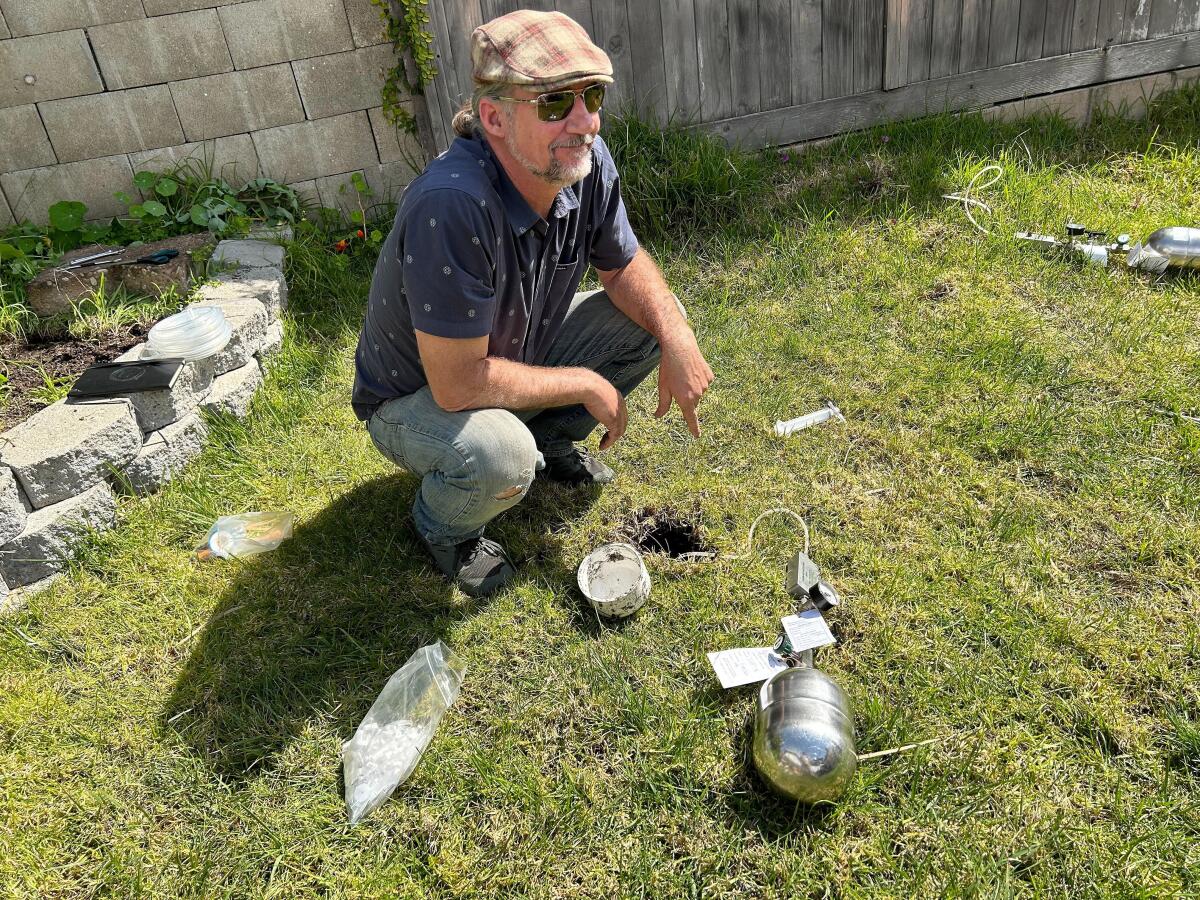
Soil vapor sampling
Timothy Nelligan, an environmental engineer from San Clemente, met Smart in college. He recalled her knocking on his door and asking to use his landline phone.
“It was this 6-foot-tall, attractive girl by herself, who introduced herself as Roxy,” said Nelligan, referring to a nickname Smart used from a clothing brand she favored.
A week and a half later, he said, her disappearance was all over the local TV stations.
Nelligan said he didn’t know Smart’s family, but he’d always wished he could help.
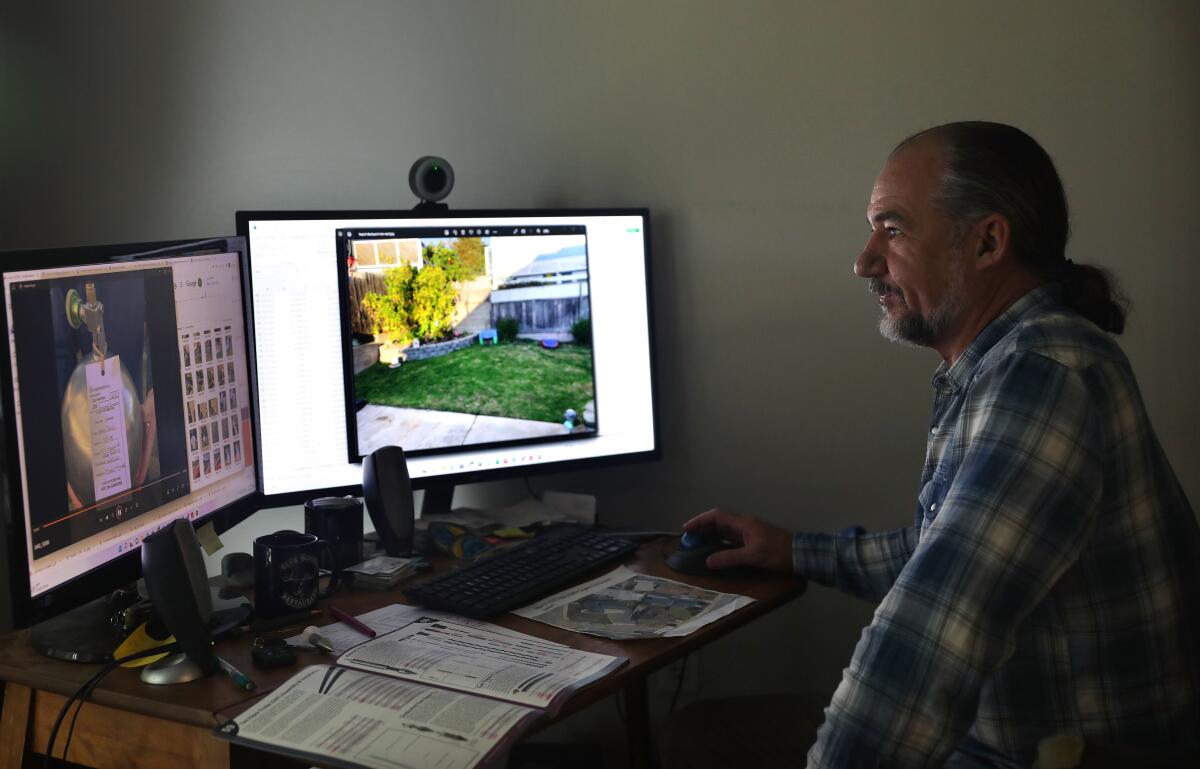
The public’s on-again, off-again interest kept Smart’s disappearance in the news sporadically, but a podcast called “Your Own Backyard,” begun in 2019 by Chris Lambert, shined a new spotlight on the cold case.
“I had a sort of ‘Aha!’ moment and realized I could potentially use my engineering skill set,” Nelligan said.
In November 2019, he began researching how bodies decompose in soil. Two months later, he recruited Steve Hoyt, another Cal Poly grad with a doctorate in environmental science who has built a business on the Central Coast testing soil samples. Brian Eckenrode, a retired FBI forensic scientist and expert in human decomposition, joined them in 2021.
Authorities had repeatedly searched the backyards of homes owned individually by Ruben Flores and Susan Flores, the parents of Paul Flores. Sheriff’s deputies even used ground-penetrating radar and cadaver dogs to search Ruben Flores’ Arroyo Grande property in 2021. No remains were uncovered, but a month later, both Flores men were arrested and charged in connection with Smart’s murder.
Prosecutors in the Kristin Smart murder trial turn to graphic images and testimony from two women who testified Paul Flores raped them.
Nelligan knew that soil vapor sampling could identify the presence or absence of volatile organic compounds linked to human decomposition.
The trio keyed in on the Arroyo Grande home of Susan Flores, a short distance from Ruben Flores’ house. The property on East Branch Street had been the subject of search warrants in the past — including one that stemmed from civil ligation with the Smart family.
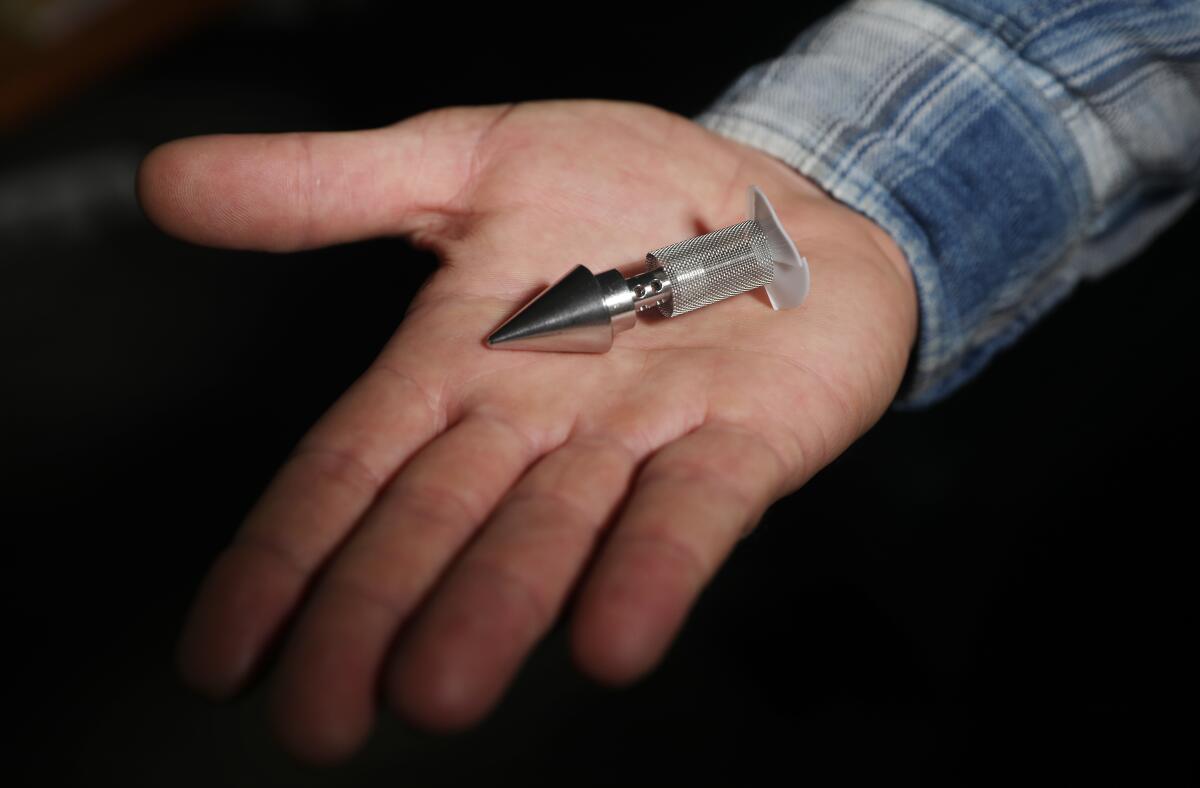
For the record:
9:50 a.m. June 28, 2023An earlier version of this article misidentified neighboring homeowner Marcia Papich as Martha.
Nelligan contacted neighboring homeowner Marcia Papich, whose fence abuts Susan Flores’ backyard. After digging holes in the dirt near the property line, Nelligan pushed a small tool known as a soil vapor probe, with a long, straw-like attachment, about 3 to 5 feet into the earth. Any gases the probe encountered were then vacuum-withdrawn and collected, then sealed in a canister. The extracted volatile organic compounds were then sent for analysis at a San Luis Obispo laboratory operated by Hoyt.
What showed up when those compounds were represented with colors on a plume map and compared with dozens of control-point samples of nearby soil indicated the presence of a decaying body, according to Eckenrode.
Susan Flores has never been charged in connection with her son’s crimes. She maintains that he didn’t kill Smart and that her family doesn’t know the missing student’s whereabouts.
Jeff Radding, a lawyer who represents Flores, could not be reached for comment.
But attorney Harold Mesick, who secured a not-guilty verdict in Ruben Flores’ accessory charges, said the idea that a body could be in Susan Flores’ yard is “ludicrous.”
He suggested that if authorities were looking for Smart’s remains, they should expand their investigation into who truly took her, maintaining that the Flores family had nothing to do with her disappearance. Mesick reiterated that nothing had ever been found in multiple searches of both Susan and Ruben Flores’ yards, and said that authorities caused $30,000 in damage to Ruben Flores’ property by digging below his deck — a search that yielded nothing.
Of course, the researchers cannot say whose remains might be in Flores’ yard or when they may have been buried. But the trio say their analyses in 2020, 2021 and this year have indicated there’s a body in the ground.
The news has buoyed the hopes of Stan and Denise Smart, who are eager to know where their daughter is.
“The most important thing for our family is the ability to bring Kristin home to be buried in the presence of those who love her,” said Denise Smart, who noted she and her husband had met with the team and seen their research.
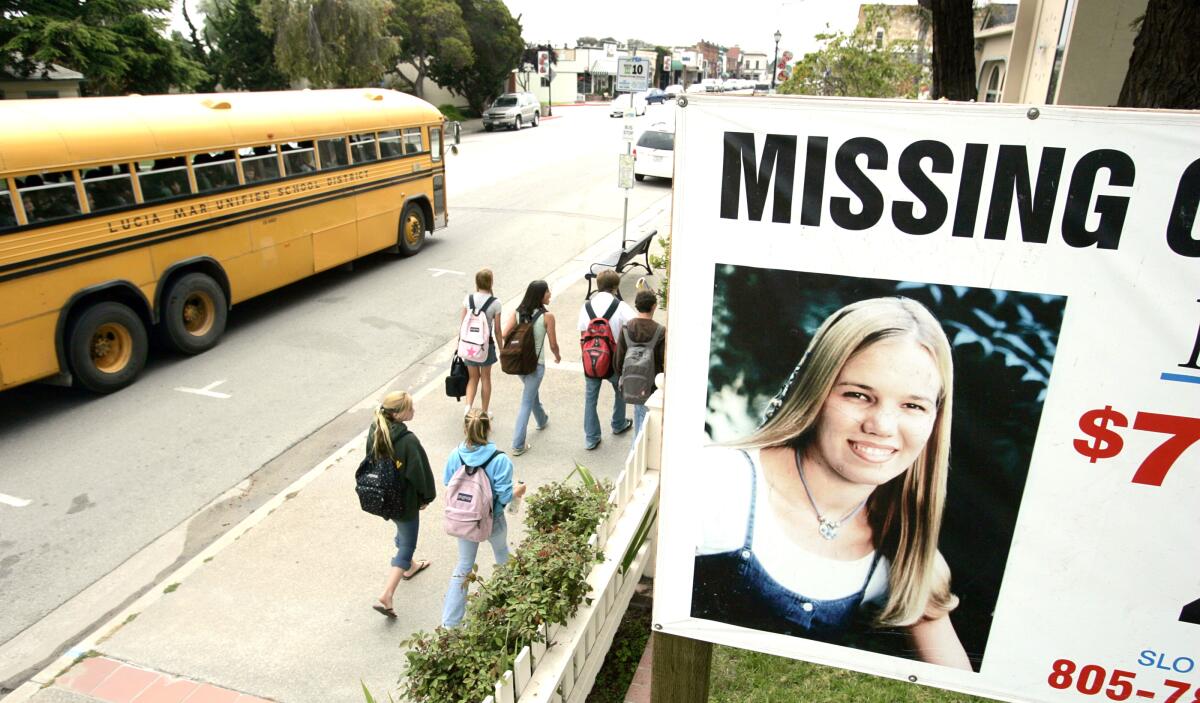
‘A source of human decomposition’
The Branch Street house had first come under scrutiny a few months after Smart went missing. Mary Lassiter was renting the pale-blue two-story home. She found an earring in the driveway and turned it in to authorities.
But before the earring could be examined, it was misplaced, officials with the Sheriff’s Office said. When interviewed for the podcast “Your Own Backyard,” Lassiter said the earring matched the necklace Smart is wearing in photos that went up after her disappearance.
Even stranger was the beeping that awakened Lassiter one morning.
“It sounded like a digital watch alarm,” she said of the noise coming from the backyard. Months later, the sound stopped.
Sign up for This Evening's Big Stories
Catch up on the day with the 7 biggest L.A. Times stories in your inbox every weekday evening.
You may occasionally receive promotional content from the Los Angeles Times.
But searches by the Sheriff’s Office — one in 1997 and another in 2000 with the help of the FBI — yielded nothing, said Chief Deputy Paul. Ground-penetrating radar used in the 2000 search discovered two anomalies, he said, but digs in those areas found nothing more.
Nearly two decades later, retired Mammoth Lakes police Det. Paul Dostie visited the property after a journalist in San Luis Obispo County heard Lassiter’s story and began an editorial campaign to “dig the backyard.” Dostie brought his trained cadaver dog, which twice alerted near the fence line.
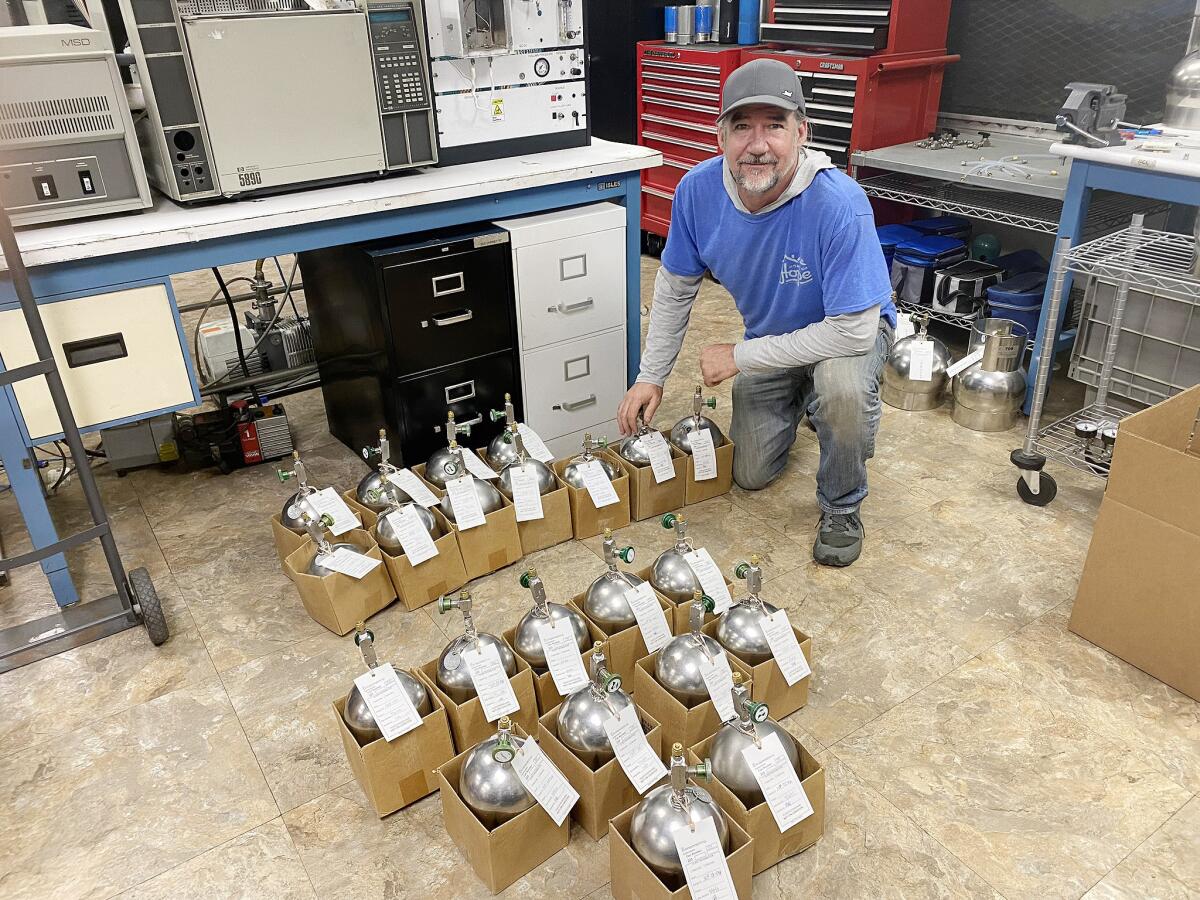
A concealed grave?
As authorities continued to pursue other avenues in the Smart investigation, Nelligan and his team began work in Papich’s backyard, next to Susan Flores’ house, in late 2020.
Seeking evidence of specific volatile organic compounds found in gravesites, the group collected underground soil vapors into football-sized chambers. They would test for carbon tetrachloride, trichlorofluoromethane, dimethyl disulfide, toluene, chloroform and other chemicals associated with the decomposition of human remains.
The testing relied in part on Eckenrode’s 23 years as an analytical chemist with the FBI. He has spent time analyzing decaying remains at the University of Tennessee’s Anthropology Research Facility, also known as the Body Farm.
Eckenrode explained that it is possible to tell the difference between the decomposition of human and animal remains. He likened it to flying over Buffalo and New York City; each has different building heights and layouts.
“Think of the different cities like different animals,” he said. “We want to find that one cityscape that is human and only human.”
Now a forensic chemistry professor at George Mason University in Virginia, Eckenrode is among a small group of scientists who have worked for the last two decades on refining the nearly 500 volatile organic compounds, or VOCs, generated during human decomposition, whittling that number down to between 30 and 50 that he says are telltale signs of a concealed grave.
Another leading expert, who requested anonymity because they had not independently reviewed the research, told The Times that work is still being done in that field, and that the 30 to 50 VOCs that Eckenrode has narrowed down aren’t definitive.
However, Eckenrode said the analysis of numerous samples from in and around Papich’s yard points to a body decomposing on the Flores property.
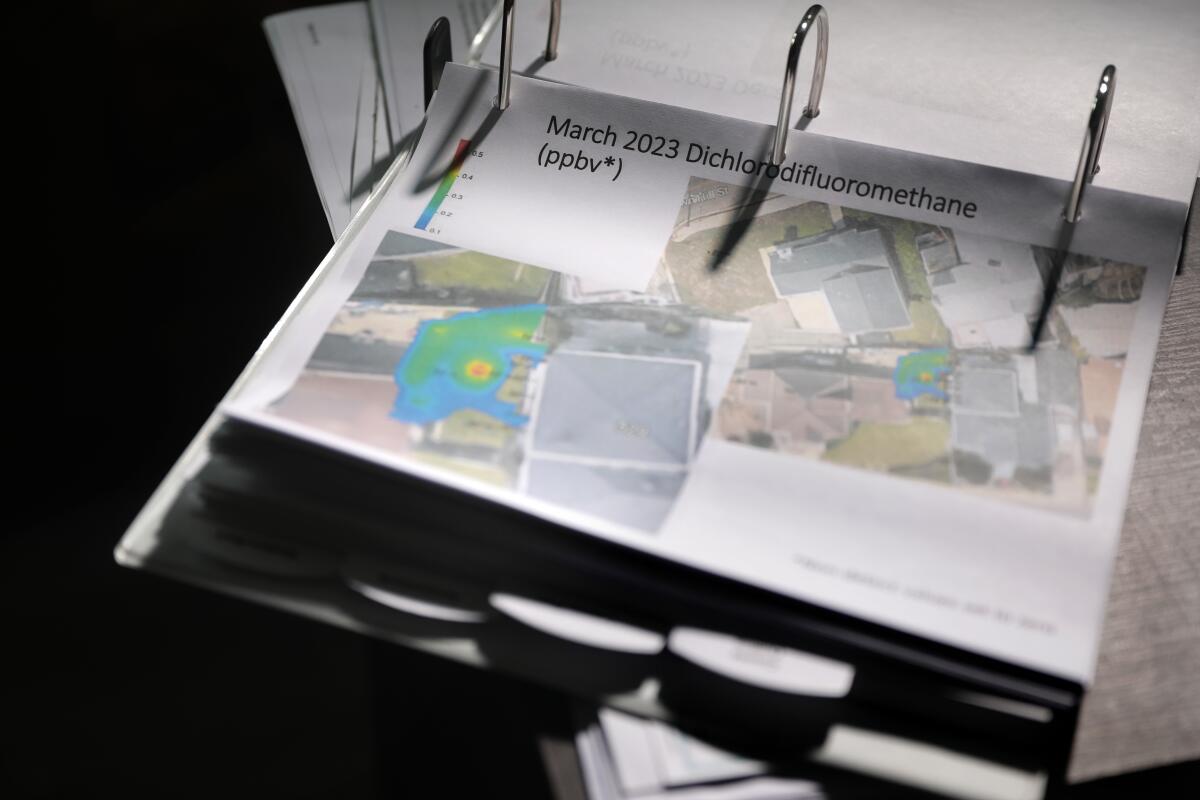
“The plume map shows the samples which have both elevated numbers of compounds and concentrations, which, in my professional opinion, tends to indicate a source of human decomposition,” he said.
While VOC sampling has not previously been used to search for homicide victims, it has been researched in other settings. Maiken Ueland, deputy director of the Australian Facility for Taphonomic Experimental Research, studied the decomposition process of donated bodies in a simulated building collapse. She noted in her research that VOC profiles changed in correlation with the bodies’ rate of decomposition.
Eckenrode said the methods used in the Arroyo Grande testing could be applied on a wider scale to help locate bodies elsewhere.
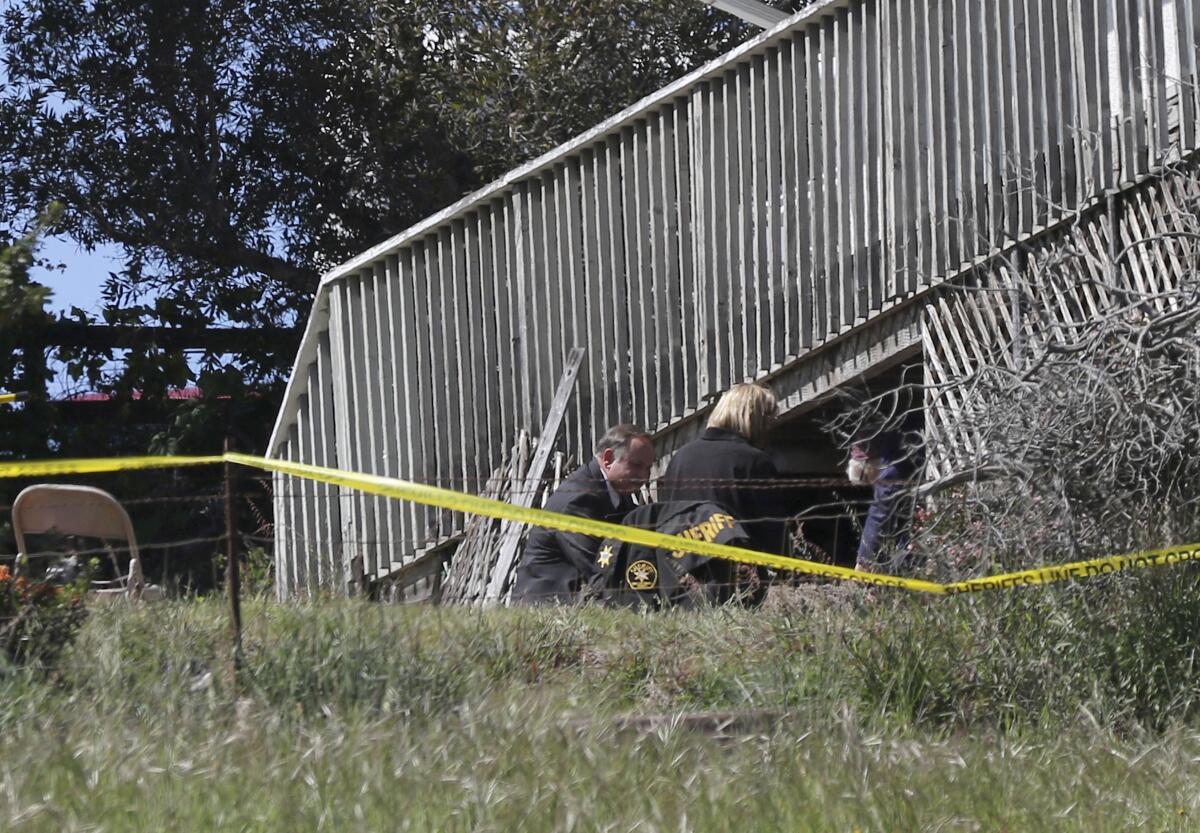
Time to ‘bring Kristin home’
This is not the first time officials have thought they knew where Smart’s body was buried. In 2016, a team of FBI agents and San Luis Obispo County sheriff’s deputies excavated a hillside above Cal Poly as well as two undisclosed locations. Five years later, investigators used cadaver dogs and ground-penetrating radar to search Ruben Flores’ backyard. The property was first combed in the 1990s.
After Flores and his son were charged in 2021 in connection with Smart’s death, prosecutors alleged the two had hidden the young woman’s body under the raised deck of the father’s home on White Court, and moved the remains in 2020 as authorities zeroed in on the house. But ultimately, the elder Flores, now 82, was acquitted of helping his son cover up the crime.
Tim Perry, a former federal prosecutor and a public safety appointee in President Biden and Gov. Gavin Newsom’s administrations, recently began working with Nelligan and his team. He said the group appreciates how difficult cold cases are to work. The men also acknowledge that their data suggest Smart’s body is not located where prosecutors presented at trial.
“Now that Paul Flores has been convicted and sentenced, it may be the opportune time for law enforcement to turn their attention to bring Kristin home,” Perry said.
On Tuesday, San Luis Obispo County authorities arrested longtime suspect Paul Flores along with his father in connection with Smart’s slaying.
A week after Flores was sentenced to 25 years to life in prison, Nelligan, Eckenrode and Hoyt returned to his mother’s neighborhood in Arroyo Grande. They again set up shop in Papich’s backyard.
Nelligan twisted a heavy-duty metal auger, corkscrewing it into the soft, rain-soaked soil near Susan Flores’ white picket fence. Eckenrode crouched nearby, holding a canister with a long tube attached, ready to collect the volatile organic compounds from the soil vapor.
Nelligan said he wants to bring closure to Smart’s parents.
“We felt the community and family deserved to know,” he said.
A graphic representation of the data that came back a few weeks later lighted up a patch of Papich’s backyard bordering Flores’ property in a rich reddish-orange haloed by green, with blue spilling to the farthest reaches of the multicolored pattern.
Nelligan said the plume map showed the quantity and quality of key markers in the VOC samples.
“The data tells the story,” he said.
The Sheriff’s Office, in addition to looking into the work by Nelligan and his colleagues and contacting the FBI about it, is also consulting with a scientist at the University of Tennessee, Knoxville — home of the Body Farm — who specializes in human remains, said Smith, the sheriff’s lead detective on the case.
“It is intriguing if we can get some validation,” he said.

Subscribers get exclusive access to this story
We’re offering L.A. Times subscribers special access to our best journalism. Thank you for your support.
Explore more Subscriber Exclusive content.
Getting a new search warrant for Susan Flores’ property would require probable cause, the detective said, and it’s still a challenge for researchers to show there are “likely” human remains.
“The Smarts want to locate Kristin, and we are trying to do everything to locate Kristin,” Smith said.
At the same time, he added, authorities don’t want to provide any options for appeals that could undermine Paul Flores’ murder conviction.
“We are walking on thin ice here, and before we go any further, we want to make that ice thicker,” Smith said. “Does a court consider soil vapor evidence?”
The Smarts say that the science of soil vapor testing is complex and that they will leave its interpretation up to the experts. But Stan Smart said his family supports the work being done in that area.
“It is significant to me,” he said. “Others are trying to bring Kristin home.”
Neither parent wants to get too emotionally invested in the efforts after so many disappointments in their search for their daughter. Still, they think the findings are telling.
When asked about VOCs that could indicate the presence of a body on Susan Flores’ property, Denise Smart said, “There shouldn’t be human remains in anybody’s backyard.”
- Share via
Watch L.A. Times Today at 7 p.m. on Spectrum News 1 on Channel 1 or live stream on the Spectrum News App. Palos Verdes Peninsula and Orange County viewers can watch on Cox Systems on channel 99.
More to Read
Sign up for This Evening's Big Stories
Catch up on the day with the 7 biggest L.A. Times stories in your inbox every weekday evening.
You may occasionally receive promotional content from the Los Angeles Times.
